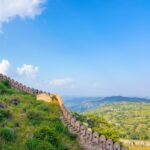Chumathang Hot Spring is a hidden gem in Ladakh, India, located along the banks of the Indus River at an altitude of around 4,000 meters. It is known for its therapeutic hot springs with mineral-rich waters and offers a natural remedy for arthritis and joint pain. The springs are a unique attraction, with hot water bubbling amidst Ladakh’s cold desert landscape. Chumathang’s peaceful atmosphere, surrounded by towering mountains and the flowing Indus, makes it a perfect spot for relaxation and rejuvenation. Less crowded than other Ladakh destinations, it offers nature lovers and adventure seekers a tranquil escape.
Chumathang Hot Spring Location
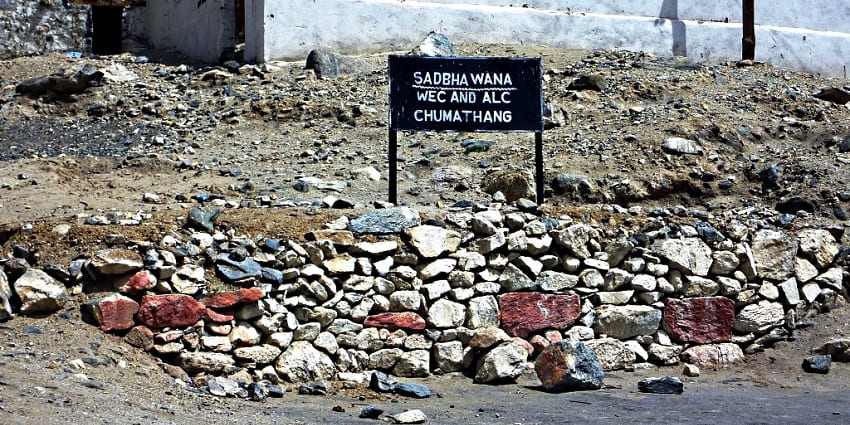
Photo: John Hill / Wikimedia Commons
Chumathang Hot Spring is located in the remote Ladakh region of northern India, along the banks of the Indus River. It lies approximately 138 kilometres southeast of Leh, on the road towards Tso Moriri Lake, Chumathang Village. Moreover, situated at an altitude of around 4,000 meters, Chumathang is surrounded by the stunning, barren landscapes typical of Ladakh, offering breathtaking views and a tranquil atmosphere amidst the Himalayan mountains.
Suggested Read: Top Places To Visit In Kargil To Explore History And Unveil Adventure
How To Reach Chumathang Hot Spring
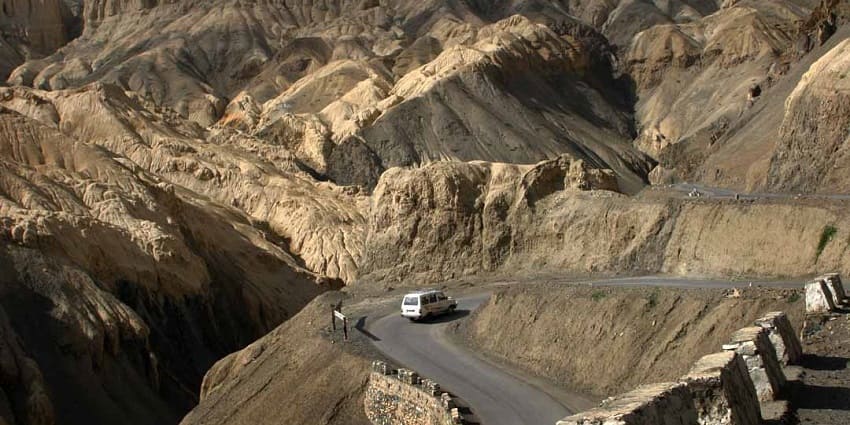
Photo: Steve Evans / Wikimedia Commons
To reach Chumathang Hot Spring, travellers usually start from Leh, the capital of Ladakh. The hot spring is located about 138 kilometres southeast of Leh, along the road to Tso Moriri Lake.
By Air: The easiest and most popular way to reach Leh is by flying. Leh has a well-connected airport (Kushok Bakula Rimpochee Airport), with direct flights from major Indian cities like Delhi, Mumbai, Srinagar, and Chandigarh.
By Road: Visitors can hire a taxi or drive their vehicle from Leh, following the Leh-Manali highway towards Upshi. From there, one needs to take the road toward Mahe village, which leads to Chumathang. Another option is to take local buses from Leh to Nyoma or Mahe which also pass through Chumathang, but schedules can be irregular, so it’s best to confirm in advance.
Places To Visit Around Chumathang Hot Spring
Whether you’re soaking in the hot springs or exploring nearby attractions, Chumathang promises an enriching journey filled with unforgettable memories and experiences. Here are a few options to explore around Chumathang Hot Spring for visitors.
1. Mahe Village And Monastery
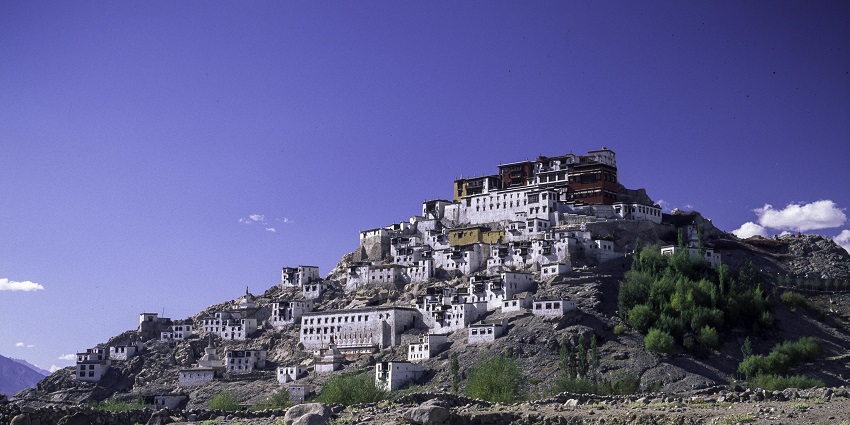
Photo: Michael Hardy / Wikimedia Commons / Image For Representation Only
Mahe Village, located near Chumathang, is a tranquil settlement along the banks of the Indus River. It is home to the Mahe Monastery, a small but significant Buddhist shrine that offers a peaceful spiritual atmosphere. Surrounded by rugged mountains and serene landscapes, the village is a perfect stop for those interested in exploring Ladakh’s traditional culture. Visitors can engage with locals, enjoy scenic views, and experience the simplicity of rural life. The monastery provides an opportunity for reflection and meditation, making it an ideal destination for a brief spiritual retreat.
Best Time To Visit: May to September
Distance From The Hot Spring: Approximately 15 km
Suggested Read: Places To Visit In Ladakh
2. Nyoma Village
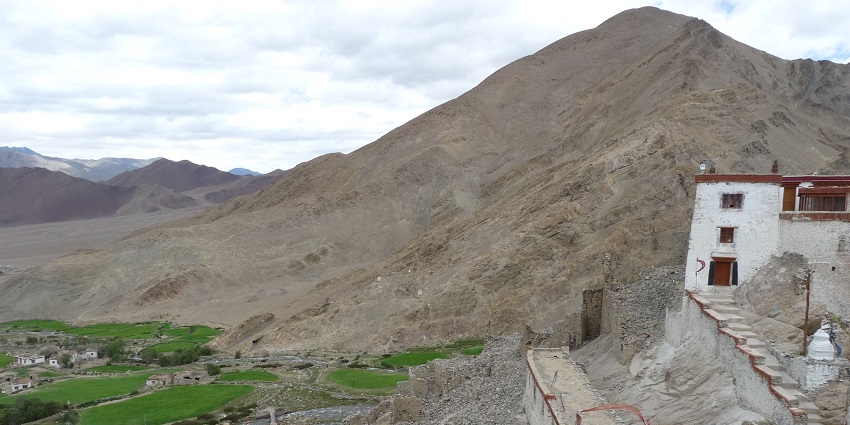
Photo: Malikbek / Wikimedia Commons
Nyoma Village, situated along the Indus River, is a serene spot near Chumathang. Known for its quiet beauty and traditional Ladakhi culture, Nyoma offers visitors an authentic rural experience. The village is surrounded by breathtaking mountains and is often a base for those heading to remote destinations like Hanle and Tso Moriri Lake. It’s an excellent stop for travellers looking to explore the lesser-known parts of Ladakh, with opportunities to interact with locals and witness their unique way of life. The peaceful environment makes Nyoma an ideal retreat for rest and reflection.
Best Time To Visit: May to September
Distance From The Hot Spring: Approximately 40 km
3. Sumdo Village
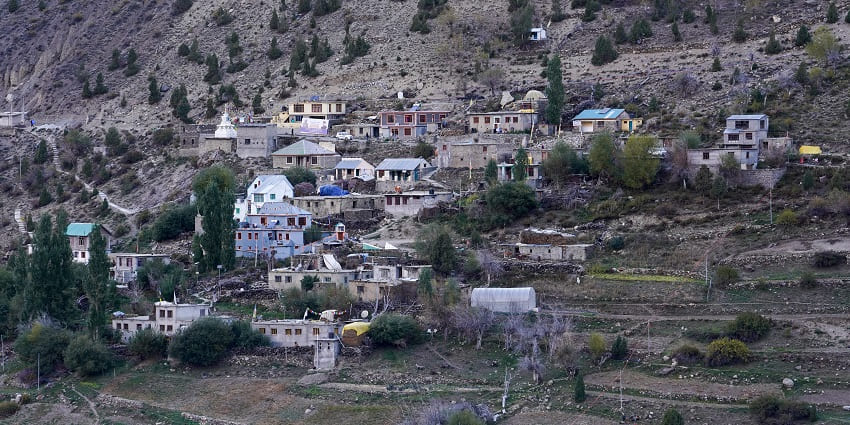
Photo: Timothy A. Gonsalves / Wikimedia Commons
Sumdo Village is a small, scenic settlement located close to Chumathang. The village is known for its traditional Ladakhi architecture and peaceful surroundings, making it a great destination for those looking to experience authentic local culture. Sumdo offers stunning views of the surrounding mountains and valleys, with a calm, serene environment perfect for relaxation. Visitors can explore the village, meet the local people, and take in the natural beauty of the area. It’s also a good base for trekking adventures, providing access to the untouched landscapes of Ladakh’s remote regions.
Best Time To Visit: June to September
Distance From The Hot Spring: Approximately 45 km
Suggested Read: Top Places To Visit In Nubra Valley
4. Puga Valley
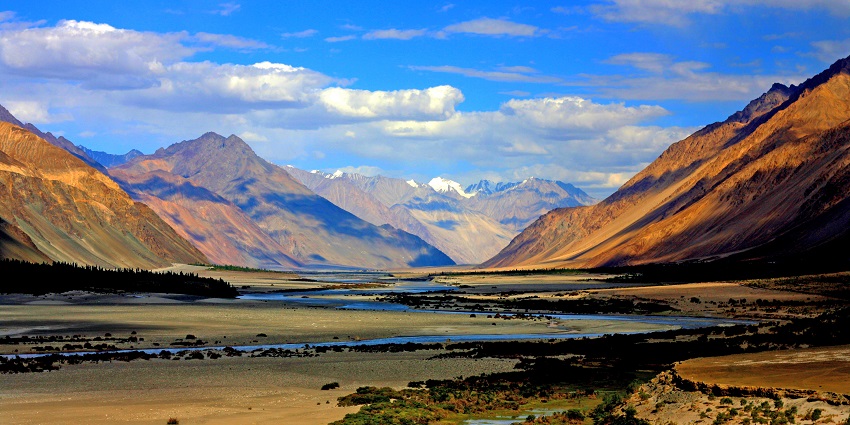
Photo: Tanmay Haldar / Wikimedia Commons / Image For Representation Only
Puga Valley is renowned for its geothermal activity and natural hot springs, similar to Chumathang. The valley’s landscape is unique, with steam vents and mineral-rich deposits scattered across the area, creating a surreal environment. Puga is not only a geological wonder but also a haven for wildlife, with various migratory birds and animals frequenting the region. The valley offers a rare glimpse of nature’s raw power and beauty, making it a fascinating destination for nature lovers, geologists, and photographers alike. The area is relatively quiet, providing a peaceful retreat for visitors.
Best Time To Visit: May to September
Distance From The Hot Spring: Approximately 25 km
5. Tso Kar Lake
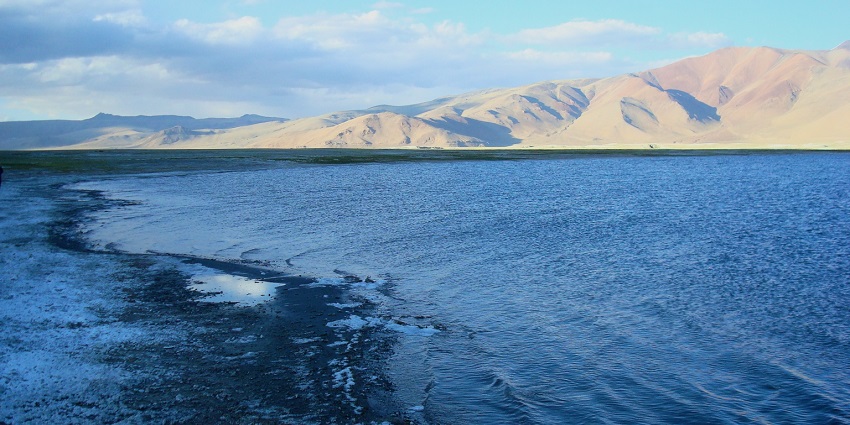
Photo: GerthMichael / Wikimedia Commons
Tso Kar Lake, also known as the “White Lake,” is a high-altitude saltwater lake located near Chumathang. Surrounded by snow-capped mountains and wide, open plains, Tso Kar offers a stunning, untouched landscape that is ideal for photography and nature exploration. The lake is famous for its salt deposits and the diverse birdlife that inhabits the area, including the rare black-necked crane. Tso Kar’s remote beauty and pristine environment make it a peaceful destination for visitors looking to escape the usual tourist crowds. Its tranquil atmosphere and striking scenery leave a lasting impression on all who visit.
Best Time To Visit: June to September
Distance From The Hot Spring: Approximately 65 km
Suggested Read: Things To Do In Nubra Valley
Where To Stay
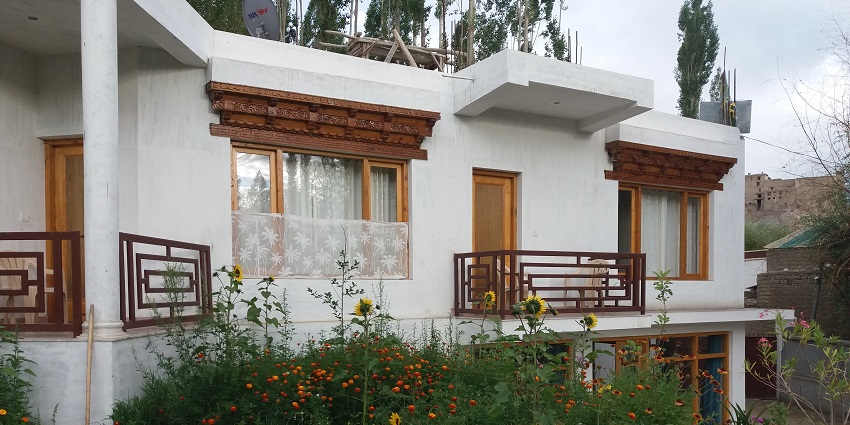
Photo: Yann Forget / Wikimedia Commons
While visiting Chumathang Hot Spring, travellers can stay in small guesthouses or homestays within the village. These accommodations offer simple, clean rooms and basic amenities, providing an authentic Ladakhi experience. The guesthouses are often family-run, with warm hospitality and home-cooked meals, allowing visitors to enjoy traditional Ladakhi cuisine. During the summer months, tented camps may also be available, offering a more adventurous stay with stunning views of the surrounding mountains and the Indus River. For those seeking more comfort, accommodations in nearby towns like Leh or Tso Moriri are available, though farther from the hot springs.
Where To Eat
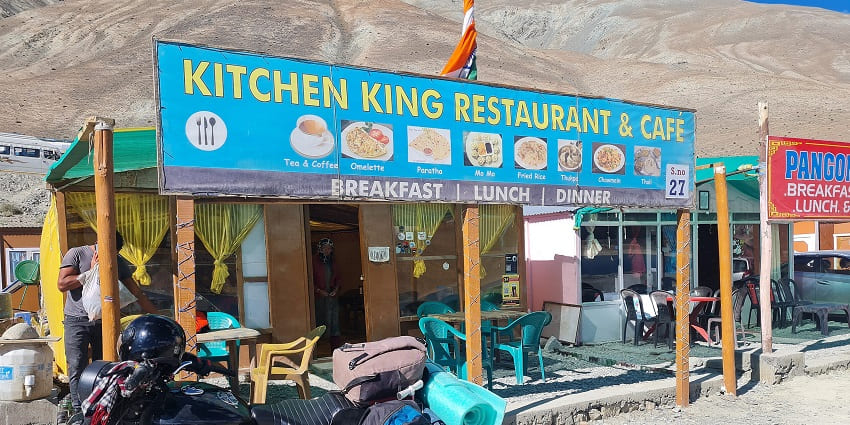
Photo: Jagseer S Sidhu / Wikimedia Commons
While visiting Chumathang Hot Spring, dining options are mostly limited to local guesthouses and homestays, where hosts serve traditional Ladakhi meals. These meals typically include dishes like thukpa (noodle soup), momos (dumplings), and butter tea, offering a taste of local cuisine. The food is simple, homemade, and often vegetarian, with fresh ingredients sourced from the region. Moreover, if an individual is travelling from Leh or nearby towns, they can find a variety of restaurants and cafes along the way, offering Indian, Tibetan, and Continental dishes. In some places, seasonal tented camps may also offer meals as part of the accommodation package. It’s advisable to carry snacks or packed food, as options are sparse in this remote area.
Suggested Read: Best Food In Leh
Best Time To Visit
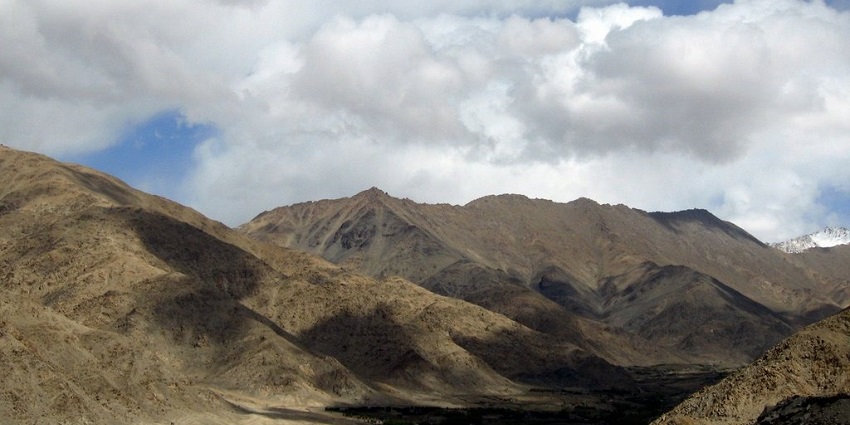
Photo: Alphahansraj / Wikimedia Commons
The best time to visit Chumathang Hot Spring is from May to September. During this period, the weather in Ladakh is pleasant, with daytime temperatures ranging from 15°C to 25°C, making it ideal for outdoor activities like exploring the hot springs. The roads are clear and accessible, allowing for easier travel to Chumathang and nearby attractions. While, during winters (October to April), temperatures drop drastically, and heavy snowfall may block roads, making travel challenging. Additionally, the extreme cold makes it less comfortable to fully enjoy the hot springs and surrounding landscapes.
Other Factors To Consider
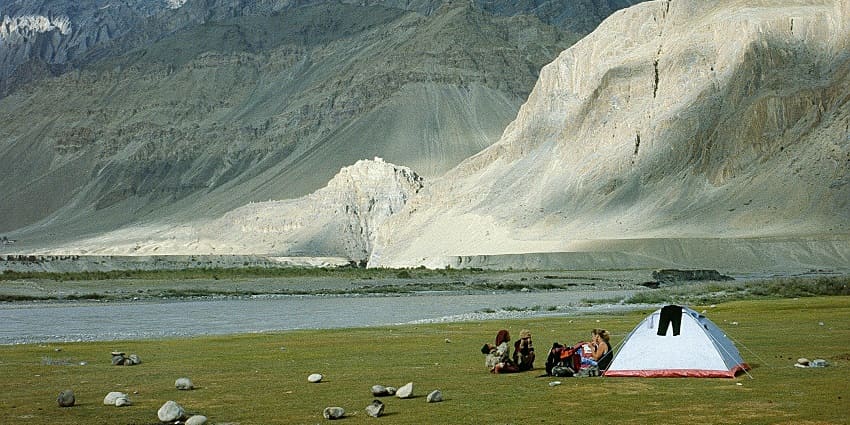
Photo: Hamon jp / Wikimedia Commons
Here are a few more factors to consider while visiting Chumathang Hot Spring.
Average Cost Of The Trip
The average cost of a trip to Chumathang Hot Spring depends on the visitors’ mode of travel, accommodation, and duration of stay. For a basic trip from Leh, one can expect to spend around ₹10,000 to ₹15,000 per person for a 2-3 day visit. This includes transportation (taxi or shared vehicle), basic accommodation in guesthouses or homestays (₹500 to ₹1,000 per night), and meals. The cost can rise if you opt for a more comfortable stay, such as in tented camps or better guesthouses. To top it all, extra expenses may include entry fees to nearby attractions and travel insurance.
Tips For Travellers
- ATMs are scarce in remote areas, so carry enough cash for the stay.
- The dry, high-altitude climate can cause dehydration, so drinking plenty of water is advisable.
- Mobile network coverage is limited. Therefore, be prepared for no internet access.
- Be mindful of Ladakhi customs and religious sites, such as monasteries, and dress modestly.
- Ladakh is an eco-sensitive zone, so avoid using plastic and dispose of waste responsibly.
Suggested Read: Discover Stok Monastery For A Spiritual Retreat
Overall, Chumathang Hot Spring is a unique destination that offers travellers a blend of natural beauty and cultural experiences. Its therapeutic waters attract visitors seeking relaxation and healing, while the surrounding landscapes provide a breathtaking backdrop for exploration. The area’s tranquillity and remoteness allow for a peaceful retreat away from the hustle and bustle of urban life. What are you waiting for? Book a trip with TripXL right away to experience this peaceful place.
Cover Photo: Gopal Venkatesan / Wikimedia Commons / Image For Representation Only


 WhatsApp
WhatsApp
 Twitter
Twitter


